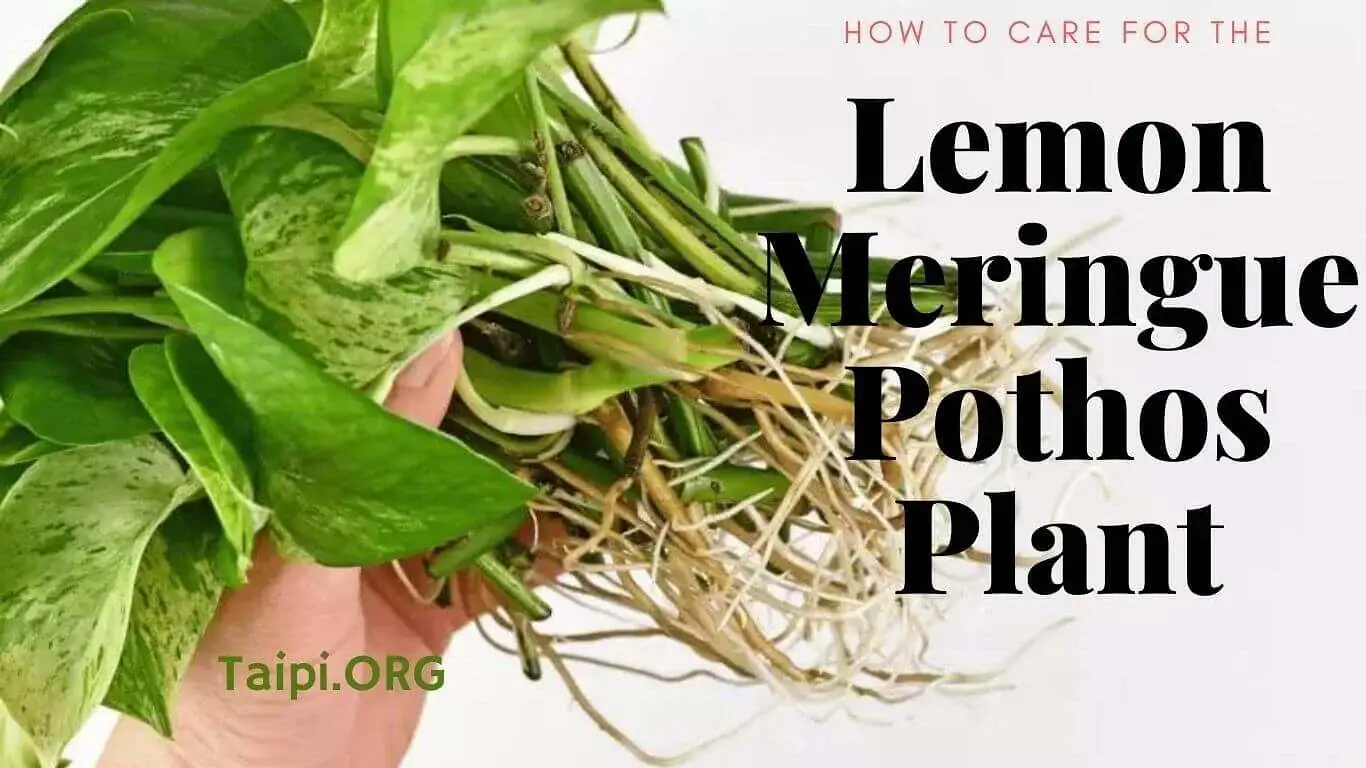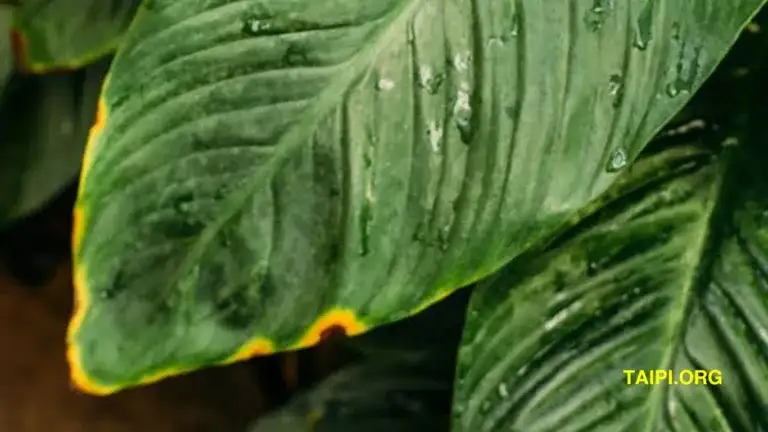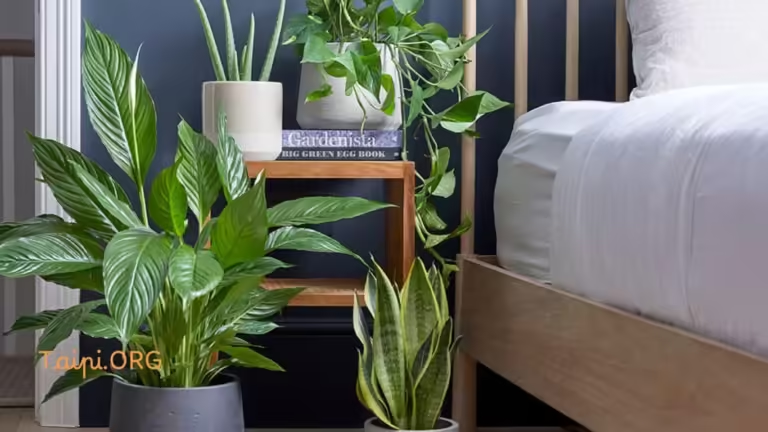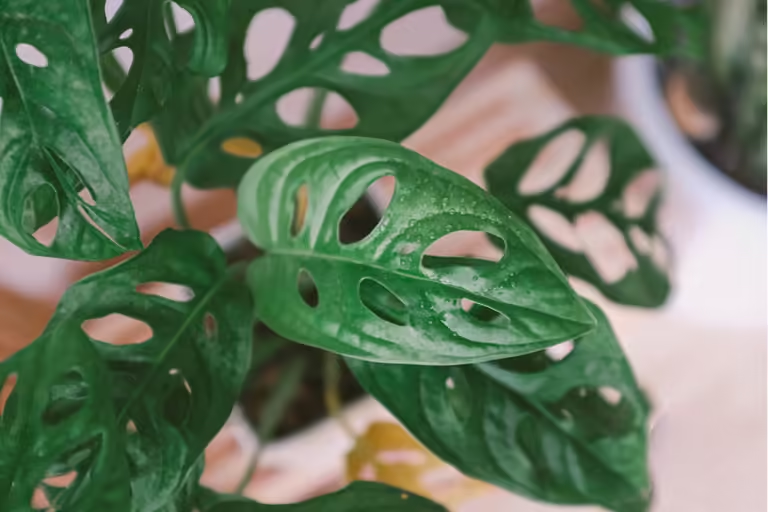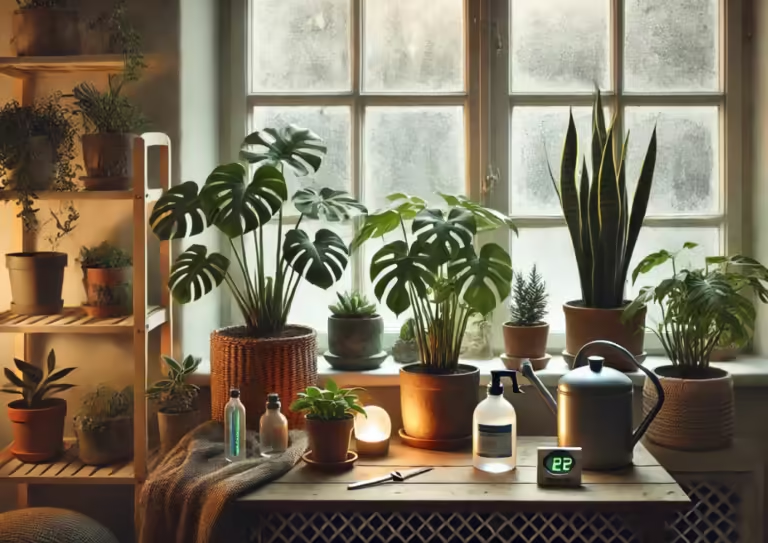Lemon Meringue Pothos Plant Growing and Caring Instructions
LEMON Meringue Pothos plant (Epipremnum aureum) is a popular houseplant known for its vibrant green and yellow variegated leaves. But before I talk about how to grow and care for this houseplant that continues to gain unprecedented acclaim, here is what you need to know:
What You Need to Know About Lemon Meringue Pothos
Lemon Meringue Pothos, also known as Lemon Lime is the newest cultivar of the Epipremnum aureum plant, commonly referred to as Pothos or Devil’s Ivy. It is a tropical vine native to the Solomon Islands in the South Pacific. The Pothos Lemon Meringue is prized for its striking variegated leaves, which feature shades of green and yellow, resembling the colors of a lemon meringue pie, hence its name.
This plant is a popular choice for indoor gardening and is well-loved for its ease of care, resilience, and ability to thrive in various indoor conditions.
Like other Pothos varieties, the Lemon Meringue Pothos is known for its air-purifying qualities, making it a beneficial addition to indoor spaces.
Lemon Meringue Pothos is typically grown as a hanging or trailing plant, but you can also train it to climb with the support of a trellis or stake.
Because of its dependent nature, the lemon meringue pothos plant is often used in hanging baskets, on shelves, or in tall planters to showcase its cascading foliage.
With proper care, including adequate light, water, and occasional fertilization, the Lemon Meringue Pothos can grow vigorously and bring a touch of vibrant greenery to any indoor environment.
How to Grow and Care for the Lemon Meringue Pothos
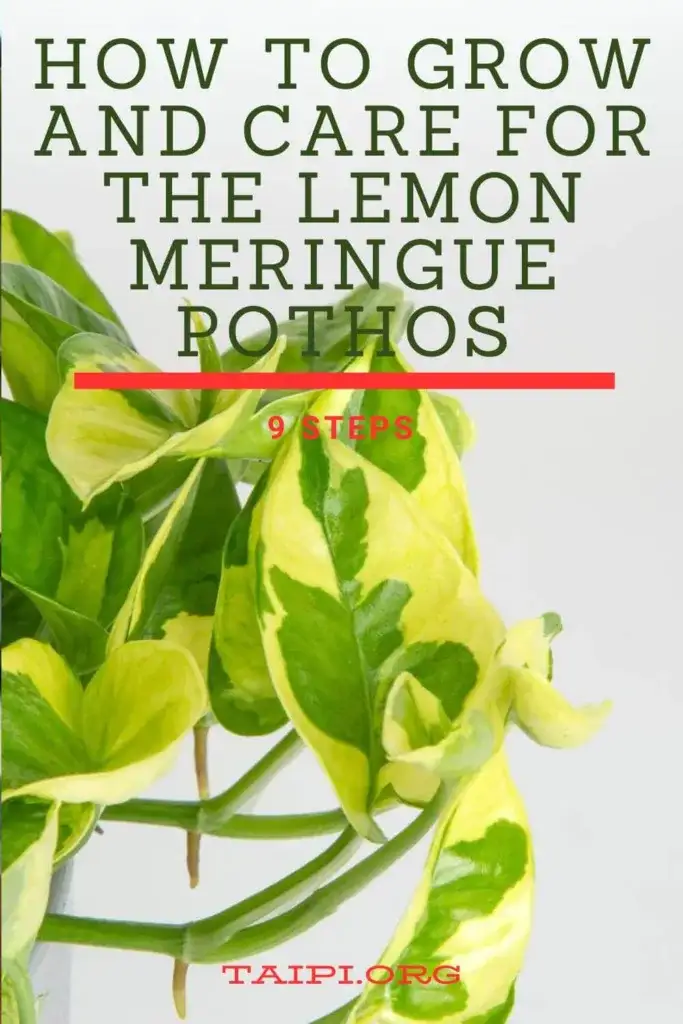
Here are some general growing and care instructions for your Pothos Lemon Meringue:
Light
Lemon Lime Pothos thrives in bright, indirect light. Avoid placing it in direct sunlight for extended periods as this can scorch its leaves. It can tolerate low light conditions but may grow more slowly.
Watering
Water the plant when the top inch of soil feels dry to the touch. It’s important not to overwater, as this can lead to root rot.
Ensure proper drainage in the pot and empty any excess water from the saucer after watering.
Soil
Use a well-draining, peat-based potting mix. A mix designed for indoor plants or a mix of potting soil, perlite, and peat moss works well.
Temperature and Humidity
Lemon Lime Pothos prefers average to warm temperatures, ideally between 65-85°F (18-29°C). It can tolerate slightly cooler temperatures but should be protected from drafts and cold air.
It can adapt to normal indoor humidity levels, but it appreciates higher humidity. You can increase humidity by misting the leaves or placing the pot on a tray of pebbles filled with water.
Compare: Does Pothos Like Humidity?
Fertilizing
Fertilize your Lemon Lime Pothos during the growing season (spring and summer) with a balanced, water-soluble fertilizer diluted to half strength. Apply fertilizer once a month or as per the product instructions.
Pruning
Regular pruning helps keep the plant bushy and encourages new growth. Trim back any leggy or yellowing stems using clean, sharp scissors or pruning shears. You can propagate the cuttings in water or soil to grow new plants.
Support
Provide a trellis, moss pole, or other support if you want your Pothos to climb. It’s a vine by nature and will happily grow upwards if given the opportunity.
Pest and Disease Control
Pothos are relatively resistant to pests and diseases, but they can occasionally suffer from issues like mealybugs, spider mites, or root rot. Inspect your plant regularly for signs of pests or disease, and treat any problems promptly with insecticidal soap or a suitable fungicide.
Repotting
Repot your Lemon Lime Pothos when it becomes root-bound, typically every 1-2 years. Choose a slightly larger pot and refresh the potting soil. Spring is the best time to repot, as the plant is entering its growing season.
Lemon Meringue Pothos Frequently Asked Questions
Q: How often should I water my Lemon Meringue Pothos?
A: Water your Lemon Meringue Pothos when the top inch of the soil feels dry to the touch. Depending on factors like temperature, humidity, and light levels, you may need to water it approximately once a week. Ensure proper drainage to prevent waterlogging.
Q: Can Lemon Meringue Pothos tolerate low light conditions?
A: Yes, Lemon Meringue Pothos can tolerate low light conditions, but it will thrive best in bright, indirect light. In low light, its growth may slow down, and the variegation in the leaves may become less pronounced.
Q: How do I propagate my Lemon Meringue Pothos?
A: Lemon Meringue Pothos can be easily propagated through stem cuttings. Simply cut a healthy stem just below a node (where a leaf is attached), and place the cutting in water or directly into moist potting soil. Roots will develop over time, and a new plant will grow from the cutting.
Q: Why are the leaves of my Lemon Meringue Pothos turning yellow?
A: Yellow leaves on a Lemon Meringue Pothos can indicate various issues such as overwatering, underwatering, inadequate light, or nutrient deficiencies. Assess the plant’s watering schedule, light exposure, and soil condition to determine the cause of the yellowing leaves and adjust care accordingly.
Q: Is Lemon Meringue Pothos safe for pets?
A: Lemon Meringue Pothos is toxic to pets if ingested. It contains calcium oxalate crystals, which can cause irritation and discomfort if pets chew or ingest the leaves. Keep the plant out of reach of pets or consider choosing pet-safe houseplants if you have animals in your home.
My Closing Thoughts on How to Care for the Lemon Meringue Pothos Plant
Growing and caring for the Lemon Meringue Pothos is a delightful and rewarding experience for indoor gardeners. To ensure its health and vibrancy:
- Provide bright, indirect light for optimal growth, though it can tolerate low light conditions.
- Water the plant when the top inch of soil feels dry, avoiding overwatering to prevent root rot.
- Use a well-draining potting mix and ensure proper drainage to prevent waterlogging.
- Maintain average room temperatures and consider increasing humidity levels, especially in dry indoor environments.
- Fertilize with a balanced, water-soluble fertilizer during the growing season, following recommended dilution rates.
- Regularly prune to encourage bushy growth and remove any yellowing or leggy stems.
- Keep an eye out for pests and diseases, treating any issues promptly with appropriate measures.
With these simple care guidelines, your Lemon Meringue Pothos will flourish, adding a touch of natural beauty and brightness to your indoor space.

